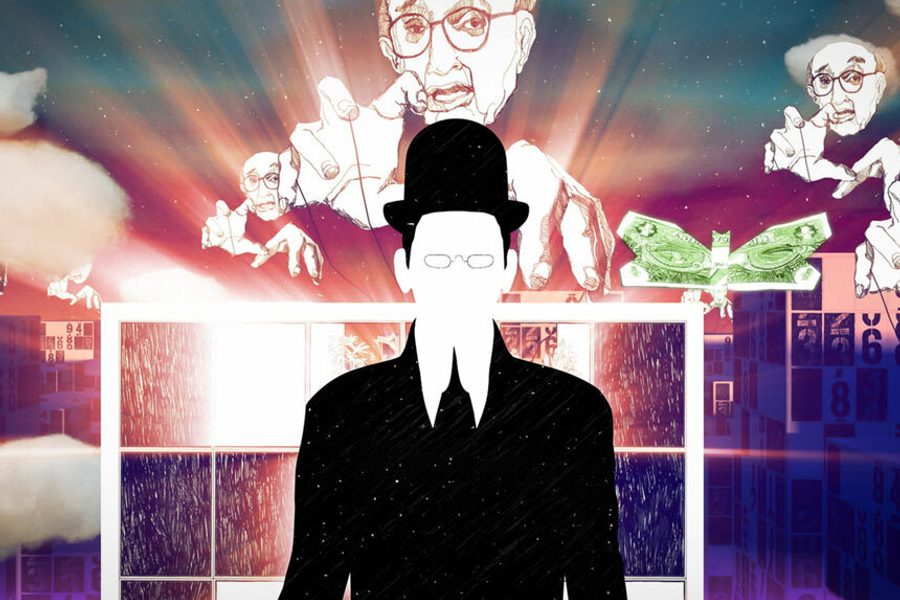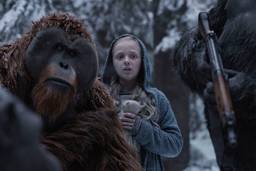Terry Jones’ ‘Boom Bust Boom’ and the Greedy Monkey Theory of Economic Collapse
In a new doc, Monty Python’s Jones illustrates capitalism’s tendency toward disaster
Eileen Jones

Boom Bust Boom is an odd little documentary co-written by Terry Jones, formerly of Monty Python’s Flying Circus, with economics professor and entrepreneur Theo Kocken. In it, an assortment of experts take us on a tour through the great busts of financial markets, all the way back to the bursting of the colossal tulip bubble of 1637.
We hear from economists Dan Ariely, Zvi Bodie, Andy Haldane and Robert J. Shiller, economic journalists Paul Krugman, John Cassidy and Paul Mason, and deceased economists John Kenneth Galbraith and Hyman Minsky in goofy cloth puppet form. Playwright Lucy Prebble and actor John Cusack also hold forth, for reasons that are not entirely clear. These talking heads describe the grim realities of the workings of capitalism in strangely chipper tones, enlivened by puppetry, animation, computer graphics and clips from South Park.
But the real question driving the film is why government leaders and economists seem to chronically forget the harsh lessons learned during those bitter busts. Unsurprisingly, the blame falls on classical economics and its myopic focus on free market competition as an engine of growth, while simply ignoring the built-in tendencies toward instability and crisis. Encouraged to mistake the map for the territory, generations of economists cling to their models regardless of real-world economic upheavals. Thus Alan Greenspan, Federal Reserve chairman from 1987 to 2006, finally admitted, after failing to predict the disastrous 2008 collapse, that his model might have some slight imperfections—only to later take back his temporary mea culpa.
The film argues that such denial persists because classical economics dovetails disastrously with certain tendencies of human nature. In situations of relative safety and stability, such as those careful, highly regulated interludes that often follow busts, people become universally inclined toward euphoric risk-taking and the irrational desire for more that leads to further financial bubbles. Proof for this human nature claim is offered in the most bizarre section of the film, involving a behavioral study at Monkey Island in Puerto Rico, which is supposed to demonstrate fundamental primate irrationality.
In lab tests, Technician #1 repeatedly offered monkeys one grape, then gave them two. Technician #2 offered three grapes, then also gave out two. The monkeys all preferred to deal with Technician #1, which, according to the behavioral scientists in charge, is irrational, since they get two grapes regardless. The explanation is that the monkeys are irrationally fixated on the lure of getting more than initially expected.
Somehow, what monkeys will do to get grapes in lab conditions is supposed to be proof positive of what humans will do in speculating for profit.
If that isn’t rotten logic, I don’t know what is. Just for starters, it’s pretty clear that the monkeys might very well have a whole different take on the grape situation, one that is perfectly rational.
I call it “The Asshole Inference.” Once they figure out they’re going to get two grapes either way, the monkeys would far rather deal with the honest and generous broker who gives what he offers plus a little extra, rather than the jerk who promises more but doesn’t deliver.
They’re avoiding the asshole, you see. A very useful behavior when dealing with human beings!
For Boom Bust Boom, however, primate irrationality is the problem, humans’ idiotic approach to the economy is a manifestation, and better education is the answer. The film touts a student group participating in the organization Rethinking Economics, “an international network of rethinkers” that is challenging economic dogma. One of their goals is, ultimately, better trained economists.
It’s a small, shaky solution to a problem of such magnitude, which befits this little hodgepodge of a film, clocking in at a mere 74 minutes. Perhaps the short and sketchy nature of the film is due to the filmmakers’ strange disinclination to delve into such economically related categories as “politics” or “ideology” when considering the workings
of capitalism. Even as the film accuses economists of ignoring obviously pertinent phenomena, it ironically ignores the complex history of human development that lies between our primate ancestry and the dominance of global capitalism, including centuries of shifting political-economic systems. Fortunately, there are other documentaries that demonstrate a richer understanding of what’s so disaster-prone about our economic system, including Collapse, Inside Job, Capitalism: A Love Story, Overdose: The Next Financial Crisis, and The Shock Doctrine.
As for Boom Bust Boom, treating our historically specific economic system as an extension of human nature, one which can be diagnosed by studying incipient monkey-capitalists, isn’t much of an analysis. But at least it will fit into a barely feature length-running time, with several minutes to spare for a John Cusack interview.
Eileen Jones is a film critic at Jacobin and author of the book Filmsuck, USA. She teaches at the University of California, Berkeley.








